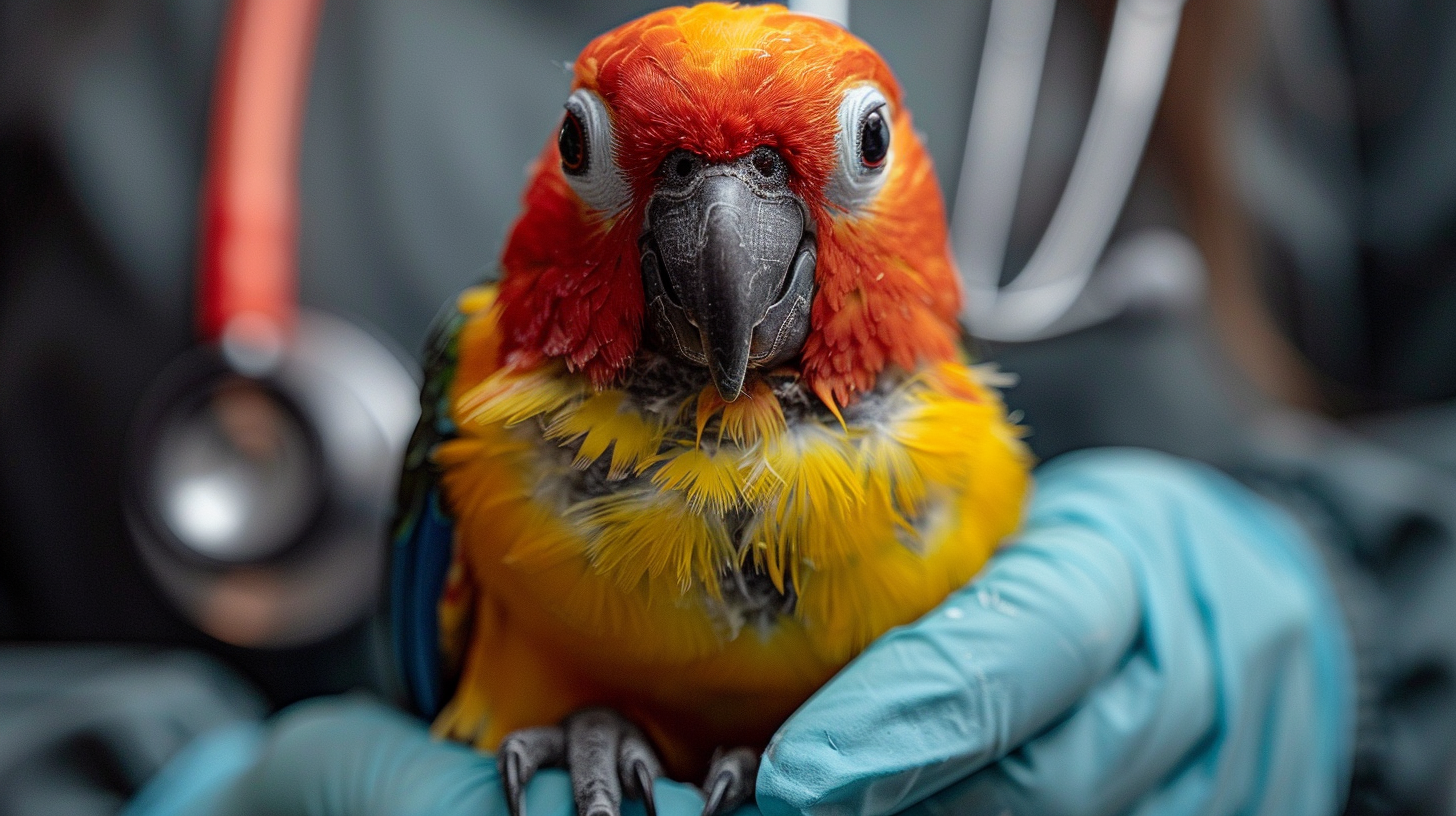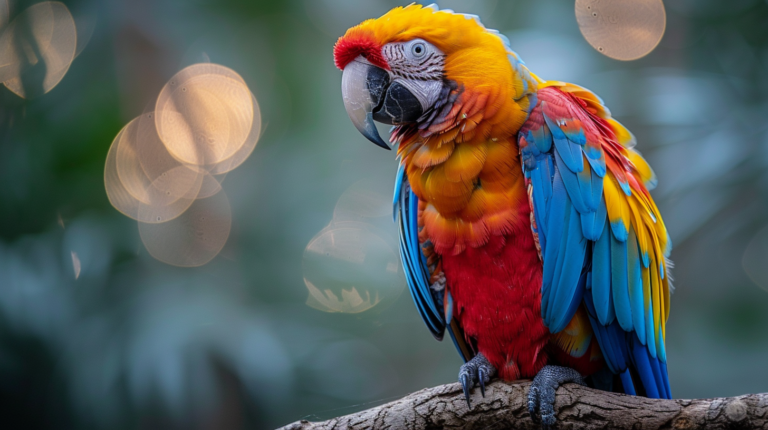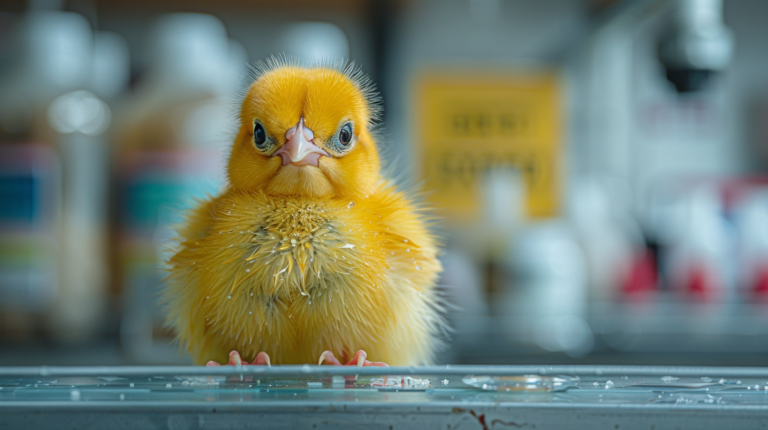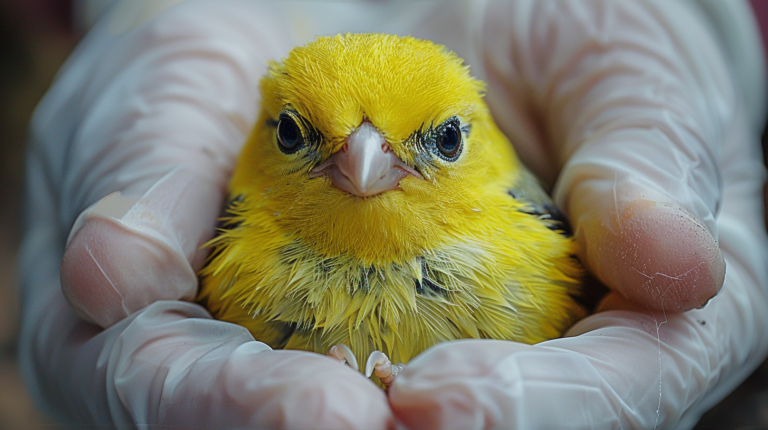Discover the critical signs of zinc poisoning in birds and learn life-saving treatments. Expert veterinary guidance for pet bird owners on prevention and emergency care.
Table of Contents
When Sarah noticed her beloved Amazon parrot, Charlie, acting unusually lethargic and refusing his favorite sunflower seeds, she initially dismissed it as a minor mood change. However, within 24 hours, Charlie’s condition deteriorated rapidly, with visible weakness and abnormal droppings. After an emergency veterinary visit, Sarah learned that her feathered companion was suffering from zinc poisoning in birds—a potentially fatal condition that affects thousands of pet birds annually.
Zinc poisoning in birds represents one of the most serious yet preventable health emergencies in avian medicine. This toxic condition occurs when birds ingest or are exposed to excessive amounts of zinc, leading to a cascade of physiological problems that can prove fatal without immediate intervention. Understanding the warning signs, sources of exposure, and treatment options can mean the difference between life and death for your feathered friend.
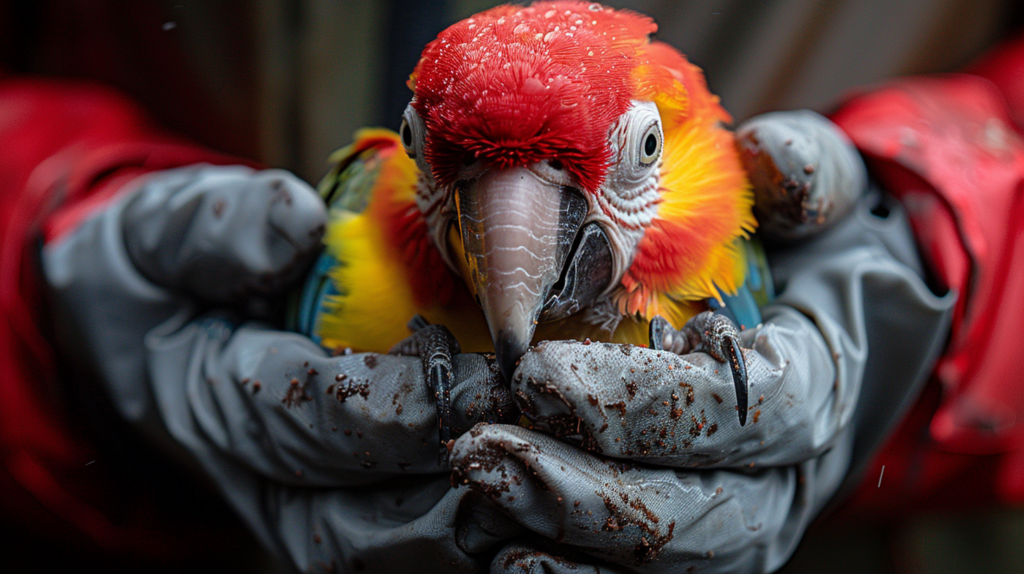
Birds are particularly susceptible to zinc toxicity due to their unique physiology and natural curiosity. Unlike mammals, birds possess a more efficient absorption system that can rapidly uptake toxic metals, making them vulnerable to even small amounts of zinc exposure. The condition affects all bird species, from small finches to large macaws, with symptoms ranging from subtle behavioral changes to severe organ failure.
| Sign # | Symptom Name | Key Indicators | Severity Level |
|---|---|---|---|
| 1 | Severe Lethargy and Weakness | Unusual quietness, reluctance to move, drooping wings | Critical |
| 2 | Gastrointestinal Distress | Abnormal droppings, vomiting, loss of appetite | Critical |
| 3 | Neurological Symptoms | Seizures, disorientation, loss of coordination | Severe |
| 4 | Respiratory Distress | Difficulty breathing, open-mouth breathing, wheezing | Critical |
| 5 | Anemia and Pale Membranes | Pale beak, gums, and eyelids, weakness | Severe |
Understanding Zinc Poisoning in Birds: The Hidden Household Danger
Zinc poisoning in birds occurs when these sensitive creatures are exposed to elevated levels of zinc through various household sources. The condition, medically known as zinc toxicosis, develops when birds ingest items containing zinc or breathe in zinc-laden particles over time. What makes this particularly dangerous is that many common household items contain zinc, often in forms that birds find irresistibly attractive to chew or explore.
The pathophysiology of zinc poisoning involves the metal's interference with essential cellular processes. Once absorbed, zinc competes with other vital minerals like iron and copper, disrupting hemoglobin production and causing anemia. Additionally, zinc accumulates in the liver, kidneys, and pancreas, leading to organ dysfunction and, in severe cases, complete organ failure.
According to veterinary toxicology studies, zinc poisoning accounts for approximately 15-20% of all heavy metal poisoning cases in pet birds. The Association of Avian Veterinarians reports that emergency clinics see an average of 3-5 cases of zinc toxicity weekly, with higher incidents during holiday seasons when decorative items containing zinc are more prevalent in homes.
Birds' natural behavior compounds the risk significantly. Their instinct to explore their environment through beak manipulation means they frequently mouth, chew, and ingest foreign objects. This exploratory behavior, combined with their highly efficient digestive system, creates the perfect storm for zinc absorption and subsequent poisoning.
The 5 Critical Signs of Zinc Poisoning in Birds
1. Severe Lethargy and Weakness
The first and most noticeable sign of zinc poisoning in birds is profound lethargy that differs markedly from normal tiredness. Affected birds exhibit extreme weakness, often sitting at the bottom of their cage with fluffed feathers and drooping wings. This isn't the typical sleepiness birds show at night or during rest periods—it's a persistent, abnormal lack of energy that continues throughout normally active periods.
Dr. Jennifer Martinez, a board-certified avian veterinarian with over 15 years of experience, explains: "When I see a bird presenting with sudden-onset lethargy, especially when combined with the owner's report of normal behavior just days before, zinc poisoning immediately enters my differential diagnosis. The weakness is so profound that birds often cannot maintain their normal perching position."
This weakness stems from the zinc's interference with cellular energy production and its toxic effects on the nervous system. As zinc levels rise in the bloodstream, it disrupts normal metabolic processes, leaving birds without the energy needed for basic functions like preening, eating, or even maintaining an upright posture.
2. Gastrointestinal Distress and Abnormal Droppings
Gastrointestinal symptoms represent another hallmark of zinc poisoning in birds. Affected birds typically experience severe digestive upset, including vomiting, regurgitation, and dramatically altered droppings. Normal bird droppings consist of three components: feces (dark portion), urates (white portion), and urine (clear liquid). In zinc poisoning cases, these droppings become abnormally colored, often appearing green, yellow, or containing blood.
The gastrointestinal tract bears the brunt of zinc's toxic effects because this is where absorption occurs. Zinc causes inflammation of the stomach lining (gastritis) and intestinal walls, leading to pain, nausea, and altered digestion. Birds may regurgitate undigested food or produce excessive amounts of saliva, creating a messy appearance around the beak and head area.
Veterinary pathology reports indicate that chronic zinc exposure can cause erosive lesions throughout the digestive system, from the crop to the intestines. These lesions not only cause immediate discomfort but can lead to secondary bacterial infections and nutritional malabsorption, compounding the bird's declining condition.
3. Neurological Symptoms and Behavioral Changes
Zinc's neurotoxic effects manifest as various neurological symptoms that can be subtle initially but progress rapidly. Birds may exhibit ataxia (loss of coordination), tremors, or even seizures in severe cases. More commonly, owners notice personality changes, with normally social birds becoming withdrawn or aggressive birds becoming unusually docile.
The neurological impact of zinc poisoning results from the metal's ability to cross the blood-brain barrier and interfere with neurotransmitter function. This disruption affects the bird's ability to process information, coordinate movement, and maintain normal behavioral patterns. Some birds develop head tilting, circling behaviors, or difficulty maintaining balance on perches.
Research published in the Journal of Avian Medicine and Surgery demonstrates that zinc accumulation in brain tissue can cause permanent neurological damage if exposure continues. Early intervention is crucial because while some neurological symptoms can resolve with proper treatment, prolonged exposure may result in irreversible cognitive and motor deficits.
4. Respiratory Distress and Breathing Difficulties
Respiratory symptoms in zinc poisoning cases often develop as secondary complications but can become life-threatening quickly. Birds may exhibit open-mouth breathing, tail bobbing with each breath, or audible respiratory sounds. These symptoms indicate that the bird's respiratory system is compromised, either due to direct zinc toxicity or secondary effects from organ dysfunction.
The respiratory distress in zinc poisoning cases typically results from two primary mechanisms. First, zinc's interference with hemoglobin production leads to anemia, reducing the blood's oxygen-carrying capacity and forcing the bird to breathe harder to maintain adequate oxygen levels. Second, zinc can cause inflammation in the respiratory tract, particularly if exposure occurs through inhalation of zinc-containing particles.
Emergency veterinary data shows that birds presenting with respiratory distress have a more guarded prognosis, as this indicates advanced systemic involvement. The combination of anemia and respiratory inflammation creates a critical situation requiring immediate medical intervention and supportive care.
5. Anemia and Pale Mucous Membranes
Anemia represents one of the most serious complications of zinc poisoning in birds and serves as a key diagnostic indicator. Zinc interferes with iron absorption and utilization, leading to iron-deficiency anemia. Additionally, zinc can cause direct damage to red blood cells, resulting in hemolytic anemia where red blood cells are destroyed faster than they can be produced.
Veterinarians assess anemia by examining the bird's mucous membranes, particularly inside the mouth and around the eyes. Healthy birds have pink, well-perfused mucous membranes, while anemic birds display pale, whitish, or even yellow-tinged membranes. This pallor indicates insufficient red blood cell concentration and compromised oxygen delivery to tissues.
Laboratory studies reveal that zinc-poisoned birds often present with packed cell volumes (hematocrit) below 35%, compared to normal values of 45-55% for most species. The severity of anemia correlates directly with the duration and intensity of zinc exposure, making early detection and treatment crucial for recovery.
| Location | Zinc Source | Risk Level | Prevention Action |
|---|---|---|---|
| Kitchen | Galvanized cookware, zinc pennies | High | Keep birds away from kitchen area |
| Cage/Aviary | Galvanized wire, zinc-coated hardware | High | Use stainless steel or powder-coated cages |
| Toys/Accessories | Zinc-plated toys, costume jewelry | Medium | Choose bird-safe, certified toys only |
| Hardware | Bolts, nuts, washers, chains | Medium | Inspect and replace with safe alternatives |
| Outdoor Areas | Galvanized fencing, roof materials | Low | Monitor outdoor access time |
Common Sources of Zinc Exposure in the Home Environment
Understanding where zinc lurks in our homes is essential for preventing zinc poisoning in birds. Many household items contain zinc in forms that are particularly attractive to birds, making prevention a matter of identifying and eliminating these hazards from the bird's environment.
Galvanized metals represent the most common source of zinc poisoning in pet birds. Items such as cage hardware, chains, bells, and toys often contain galvanized coatings that birds find irresistible to chew. The galvanization process involves coating metal with zinc to prevent rust, but this protective coating becomes a deadly hazard when birds ingest it through normal chewing behavior.
Pennies minted after 1982 contain zinc cores with thin copper plating, making them particularly dangerous if birds manage to access and ingest them. Other coins, jewelry, and decorative items may also contain significant amounts of zinc. Hardware items like nuts, bolts, washers, and wire mesh can be sources of zinc exposure, especially if they become corroded or weathered.
Certain paints and primers, particularly those used on metal surfaces, contain zinc compounds. Even seemingly safe items like some ceramic glazes, rubber products, and even some bird toys marketed as "safe" may contain zinc in levels that can cause poisoning with repeated exposure.
Emergency Treatment Protocols for Zinc Poisoning
When zinc poisoning in birds is suspected, immediate veterinary attention is crucial. The treatment protocol involves several phases, beginning with stabilization and supportive care, followed by specific chelation therapy to remove zinc from the body.
The first step in treatment involves stabilizing the bird's condition through fluid therapy, oxygen supplementation if needed, and addressing any immediate life-threatening symptoms. Veterinarians typically perform emergency blood work to confirm zinc levels and assess the degree of organ dysfunction. Normal blood zinc levels in birds range from 0.5-2.0 parts per million, while toxic levels exceed 5-10 parts per million.
Chelation therapy represents the cornerstone of zinc poisoning treatment. Chelating agents like calcium EDTA bind to zinc in the bloodstream, forming stable complexes that can be excreted through the kidneys. The chelation process typically requires hospitalization for several days, with careful monitoring of kidney function and electrolyte balance.
Dr. Robert Chen, a veterinary toxicologist specializing in avian medicine, notes: "The success of chelation therapy depends heavily on early intervention. Birds treated within 24-48 hours of exposure have significantly better outcomes than those treated after symptoms have progressed to advanced stages."
Supportive care during treatment includes nutritional support, anti-nausea medications, and treatments for secondary complications like anemia or respiratory distress. In severe cases, blood transfusions may be necessary to address life-threatening anemia.
| Timeline | Treatment Phase | Procedures | Expected Outcome |
|---|---|---|---|
| 0-2 hours | Emergency Assessment | Physical exam, blood tests, X-rays | Initial diagnosis confirmation |
| 2-6 hours | Immediate Stabilization | IV fluids, oxygen support, pain management | Vital signs stabilization |
| 6-24 hours | Chelation Therapy | EDTA or DMSA administration, monitoring | Zinc removal from bloodstream |
| 1-3 days | Intensive Monitoring | Daily blood work, organ function tests | Response to treatment assessment |
| 3-7 days | Recovery Phase | Supportive care, nutrition support | Gradual improvement in symptoms |
| 1-4 weeks | Follow-up Care | Regular check-ups, blood monitoring | Complete recovery or management plan |
Prevention Strategies: Creating a Zinc-Safe Environment
Preventing zinc poisoning in birds requires a comprehensive approach to environmental management. The key is identifying and eliminating potential sources of zinc exposure while maintaining an enriching environment for your feathered companion.
Start by conducting a thorough audit of your bird's environment, paying particular attention to cage hardware, toys, and accessible household items. Replace any galvanized items with stainless steel or powder-coated alternatives. When purchasing new cages or accessories, specifically request zinc-free options and ask for documentation confirming the absence of zinc in the product.
Toy selection requires careful consideration. Choose toys from reputable manufacturers who specifically test for heavy metals and provide certificates of analysis. Avoid toys with metal components unless they're specifically labeled as zinc-free. Natural wood toys, vegetable-tanned leather, and certified bird-safe plastics provide safer alternatives for enrichment.
Regular environmental maintenance plays a crucial role in prevention. Inspect cage hardware regularly for signs of wear, corrosion, or damage that might expose zinc coatings. Replace worn items immediately and clean all surfaces regularly to prevent the accumulation of zinc-containing dust or particles.
Long-term Health Monitoring and Recovery
Recovery from zinc poisoning in birds requires ongoing veterinary monitoring and long-term health management. Even after successful treatment, birds may experience lasting effects that require attention and care.
Follow-up blood work is essential to monitor zinc levels and assess organ function recovery. Most veterinarians recommend rechecking blood zinc levels at 2-week intervals initially, then monthly until levels normalize completely. Liver and kidney function tests help determine if any permanent organ damage has occurred.
Nutritional support plays a vital role in recovery. Birds recovering from zinc poisoning often require supplemental vitamins and minerals to restore normal metabolic function. Iron supplementation may be necessary to address anemia, while vitamin C can help support the immune system during recovery.
Behavioral monitoring helps identify any lingering neurological effects from zinc exposure. Some birds may require rehabilitation to regain normal perching, feeding, or social behaviors. Working with an avian behaviorist can help address any lasting behavioral changes and support the bird's return to normal activities.
The Role of Regular Veterinary Care in Prevention
Establishing a relationship with an avian veterinarian is crucial for both prevention and early detection of zinc poisoning in birds. Regular wellness examinations can identify early signs of heavy metal exposure before symptoms become severe.
Annual blood work that includes heavy metal screening provides valuable baseline information and can detect subclinical exposure before symptoms develop. This proactive approach allows for intervention before the bird's condition becomes critical.
Veterinarians can also provide personalized advice based on your bird's species, environment, and individual risk factors. Some birds, particularly those with a history of heavy metal exposure, may require more frequent monitoring or specialized environmental modifications.
Frequently Asked Questions
Everything you need to know about zinc poisoning in birds
Still Have Questions?
If you suspect zinc poisoning in your bird, don't wait. Contact your avian veterinarian immediately for professional guidance and treatment.
For more expert pet care tips and product recommendations, visit BlithePet.com your trusted source for pet wellness.
Conclusion
Zinc poisoning in birds represents a serious but preventable health emergency that every bird owner should understand. The five critical signs—severe lethargy, gastrointestinal distress, neurological symptoms, respiratory distress, and anemia—can develop rapidly and require immediate veterinary intervention for the best outcomes.
Prevention remains the most effective strategy against zinc poisoning. By creating a zinc-safe environment, choosing appropriate toys and cage hardware, and maintaining regular veterinary care, bird owners can significantly reduce their feathered companions' risk of exposure. Remember that early detection and prompt treatment are crucial for recovery, making it essential to seek veterinary attention immediately if you suspect zinc poisoning.
The key to protecting your bird lies in education, vigilance, and proactive environmental management. By understanding the sources of zinc exposure, recognizing the warning signs, and maintaining a relationship with an avian veterinarian, you can provide your feathered friend with the safety and care they deserve.
Have a similar experience with your pet? Share it in the comments below!

